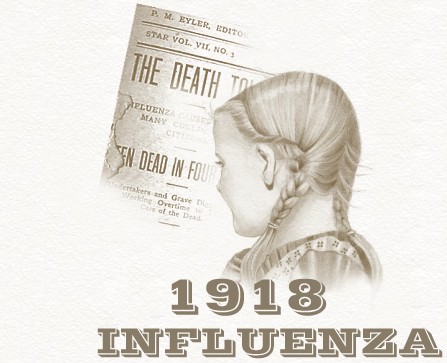Nebraska's last great epidemic was the Spanish influenza. Commonly called flu, this scourge hit the U.S. early in 1918. It had greatly intensified by September and was at its worst during the fall months, throwing a damper on most social gatherings. Even World War I victory celebrations on Armistice Day, November 11, 1918, were limited in many towns as the war against the disease continued.
Symptoms of the disease included high fever, cough, dizziness, and profuse perspiration. Frequently bronchial pneumonia developed, with death following in a high percentage of cases. It was called "the Spanish Lady" by a Russian newspaper because the worldwide epidemic was thought to have started in San Sebastian, Spain. In Omaha alone there were 974 deaths between October 5 and December 31 of 1918.
Life in Nebraska was severely disrupted during the height of the flu epidemic. As the disease spread, doctors and nurses were in short supply. By October the Nebraska State Board of Health had issued an order closing public meetings, schools, churches, theaters, and all types of entertainment. Mail carriers continued on their rounds, but wore white face masks for protection.
There was almost nothing of a holiday season during the closing days of 1918. No Christmas events or entertainments were held, and Nebraska merchants sustained severe losses from the slump in trade during the last six weeks of the year.
Quarantine rules were issued for affected homes. All residents of a house who had been in contact with a diseased person had to remain in the house until the quarantine was lifted. Only a doctor or nurse was permitted to enter or leave the house while the quarantine was in effect. Necessary supplies could be brought to the house and left outside the door. Soiled clothes could be sent to the laundry if placed in a package covered with paper.
The epidemic appeared to be quieting under the strict statewide quarantine. Omaha authorities raised the lid to permit their citizens to celebrate the New Year's holiday. By mid-January 1919, although national news stories indicated the epidemic still was claiming thousands of victims, in Nebraska the worst was over.
The above article was taken from the 'Nebraska State Historical Society'. You can read it by clicking HERE

